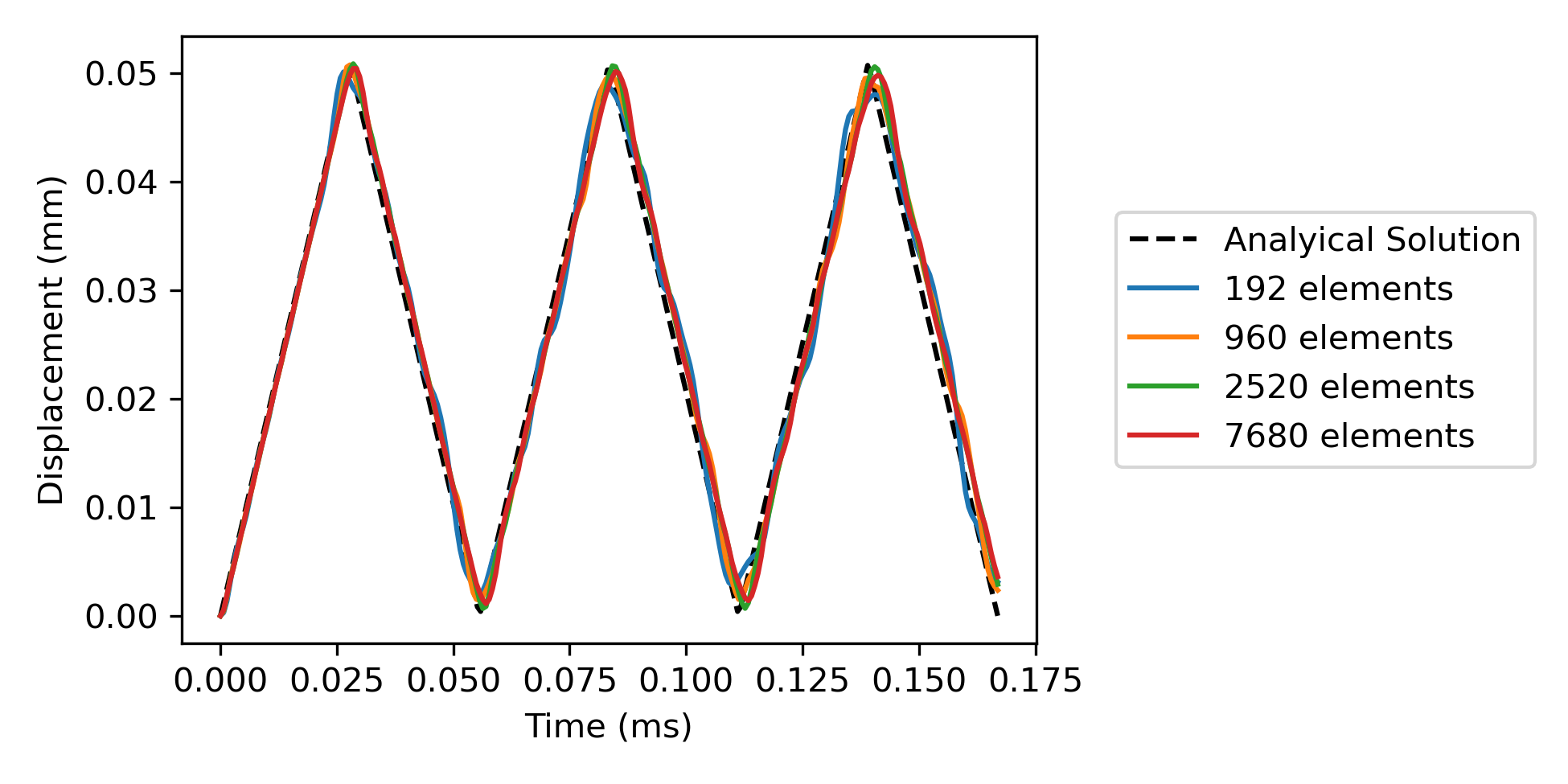Dynamic Convergence of Tardigrade-MOOSE
Similar to the quasi-static convergence study presented in Convergence of Tardigrade-MOOSE for uniaxial stress, a simple study is conducted to investigate the convergence behavior of Tardigrade-MOOSE dynamic implicit simulations. See Introduction & Analytical Solutions for description of the dynamically loaded bar problem and solution by Meirovitch. A cylinder with 5 mm diameter and 5 mm height is loaded with a force of 25 N. The modulus of elasticity is 250 MPa and the density is 2000 kg/m^3. To agree with the Meirovitch solution, a Poisson ratio of 0.0 is selected to prevent lateral expansion/contraction to satisfy the 1D assumption. For this geometry and material properties, the first natural frequency of vibration is calculated to be 17.678 kHz. To simulate 3 cycles of vibration, the simulation duration is approximately 0.170 millseconds. It was found that 240 fixed timesteps produces satisfactory results without requiring prohibitively long run times. For the expected sawtooth displacement profile with 3 periods of vibration, selecting timesteps in multiples of 6 is necessary to capture the maximum and minimum displacements.
Four meshes are considered for simulation in Tardigrade-MOOSE with
192, 960, 2520, and 7680 elements.
See the Tardigrade_dynamic_convergence Sconscript for details of how this
workflow is setup, as well as the dynamic_elastic_cylinder dictionary in the
model_package/Tardigrade_MOOSE/simulation_variables_nominal.py file
where input parameters are defined.
The mesh convergence analysis is setup as a parametric study. After simulations are initialized, exectuted, and post-processed, the displacement versus time results are collected for each case.
The analysis may be exectuted using the following command:
$ scons Tardigrade_dynamic_convergence
The --jobs=4 argument may be included to run each simulation concurrently.
The final force versus displacement plot is shown in Figure 31.

Fig. 31 Displacement vs time results of dynamic Tardigrade-MOOSE convergence study
There is decent agreement between the analytical solution and Tardigrade-MOOSE simulations. Using 60 and 120 timesteps provided poor results. It is expected that using more timesteps (such as 480 or 600) would produce better agreement at the expense of longer run times.